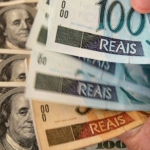Gold and silver futures reversed earlier gains during midday trade in Europe today, amid growing tensions in Ukraine and downbeat data in the Eurozone. Meanwhile, copper futures slid after below-par Chinese factory gauges.
Gold futures for December delivery on the Comex in New York traded at $1 288.2 per troy ounce, up 0.06%, at 13:04 GMT. Prices ranged from $1 285.8 to $1 290.9 per troy ounce. The precious metal added ~0.5% last week.
Silver for September delivery stood for a 0.02% daily increase at $19.495 per troy ounce.
Meanwhile, palladium futures reached the highest price in 13 years today, with the December contract climbing as high as $913.00 per troy ounce, amid fears that the Moscow-Kiev conflict will hurt Russian exports, which are 40% of the total.
Ukraine
Tensions in embattled eastern Ukraine flared up last week, after the Russian military was seen directly helping the pro-Russian rebels with manpower and hardware, pushing the Ukrainian army on the defensive.
A coastal town at the border on the Azov sea coastline, well away from the rebel’s positions, was captured by pro-Russian forces including many armored vehicles, presumably Russian military, opening up a new front for the fight.
Meanwhile, the Kremlin denied allegations of involvement. It should be noted that in previous wars Russian officials had denied such allegations, which turned out to be true. In March this year, Russian President Putin also dismissed accusations that Moscow had sent troops to Crimea, only to later admit it was Russian soldiers who took over the peninsula.
Generally, investors turn to gold in times of economic or political risk, as gold is seen as a safe-haven, keeping its value well-supported when faced with speculation. Investors, however, now seem adamant in the face of the geopolitical risks in Ukraine, keeping haven bids limited and gold pressured.
“Gold prices have been pulled higher by geopolitical tensions but pushed lower by a stronger dollar,” Barclays Plc wrote in a report today. “Market focus will turn to the U.S. unemployment report this week, where recent stronger-than-expected data have capped upward momentum in gold.”
Economic data
Gold’d big story has been the Fed easing monetary stimulus for the US economy recently. As the US central bank cuts back on the massive government spending, which has steadily been dropping from $85 billion to $25bn a month, and prepares to increase the benchmark interest rate the US currency gains in value.
Since gold, like most other commodities, is denominated in dollars, a stronger greenback increases the cost of gold to other currencies, lowering its investment appeal.
Investors now seek more positive US data to reinforce speculation that the Fed will raise the lending rate earlier than previously expected.
ISM will post its key manufacturing PMI reading tomorrow, set to log another month of massive expansion for the US factory sector, before ISM’s services gauge, also projected for a significant growth. Expectations of upbeat employment data, due later this week, further strengthens dollar bulls, after the US dollar index reached a 13-month peak last week.
Elsewhere, the Eurozone posted downbeat manufacturing readings today, though the Bloc-wide figure was still above 50, meaning an expansion in the sector. More economic data on the Eurozone is due this week, before a crucial European Central Bank (ECB) interest rate decision on Thursday. Speculation has been mounting that the ECB will take action to halt the downward spiral seen in the making for the Eurozone, though analysts expect the measures will fall short of lowering the central lending rate.
A possible quantitative easing program is on the table, however, pressuring the euro lower. The euro has a very strong opposite correlation with the dollar, meaning that a weaker euro directly supports the dollar, and hence, pressures gold.
Copper
Copper contracts for December, the most-traded contract in New York, stood at $3.1450 per pound, down 0.49%. The red metal dropped ~2% last week.
Two separate readings on Chinese factories were posted earlier today. Both the official government manufacturing PMI reading and HSBC’s figure were logged at above 50, meaning an expansion in the sector, though both were below expectations and standing for a significant slowdown in growth.
“The Chinese manufacturing data once again increased speculation that the (worlds) second-biggest economy is slowing down and this has made traders cash in some of their chips,” Naeem Aslam, chief market analyst at Ava Trade, said for Reuters.
China is the worlds leading copper consumer, accounting for more than 40% of total copper demand.





